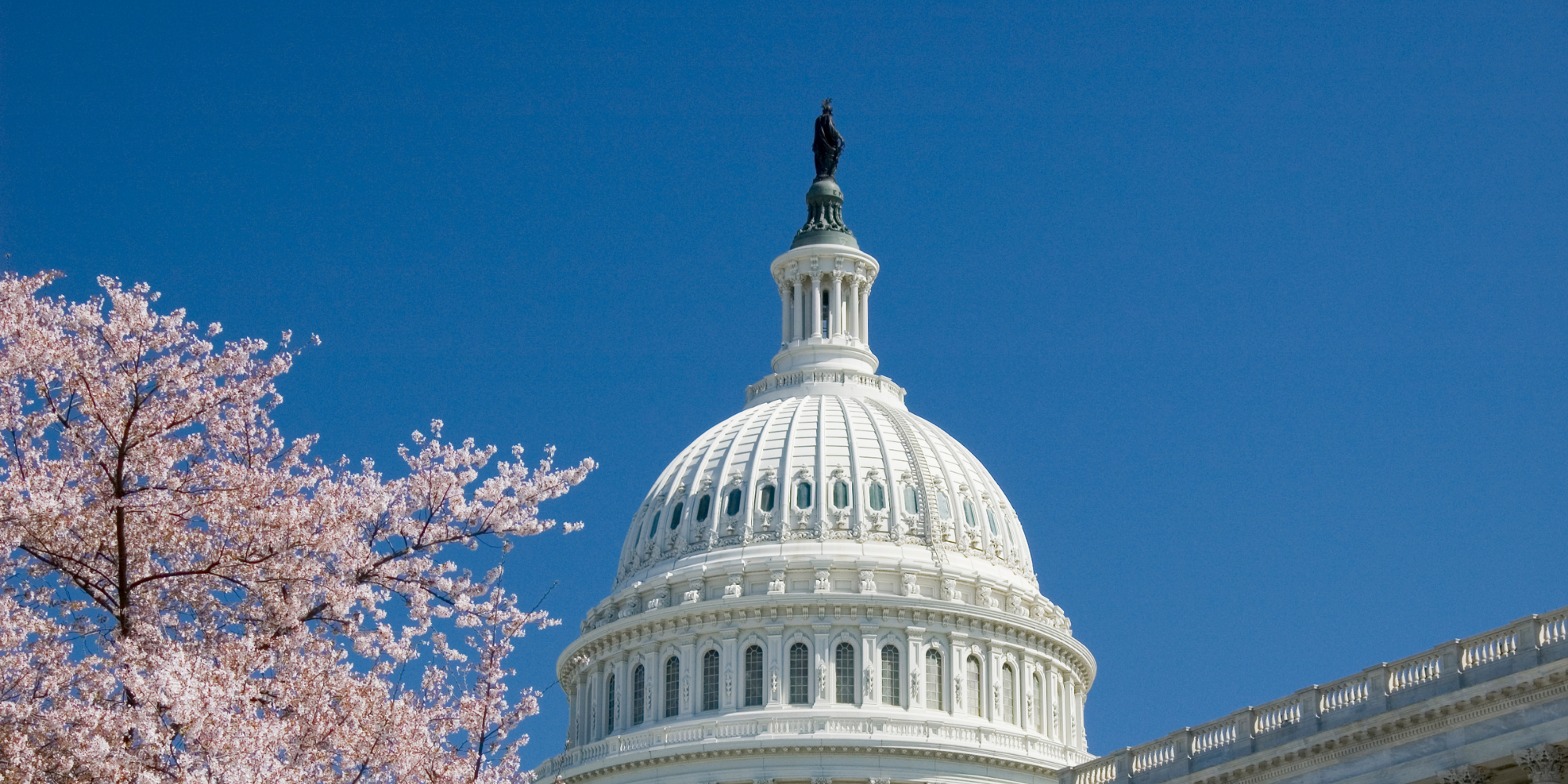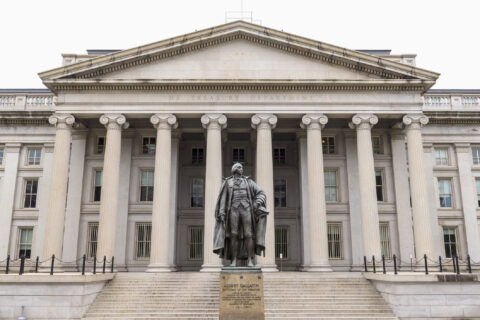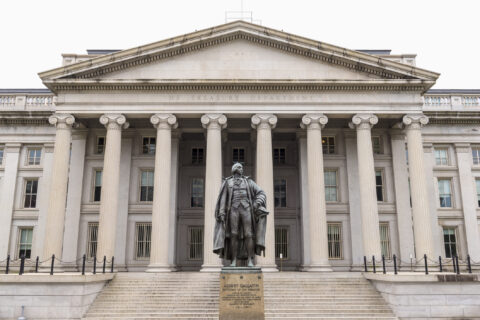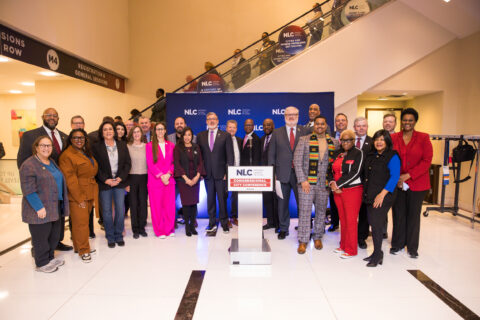The Fiscal Year 2022 Consolidated Appropriations Act increases overall federal investment in cities, towns and villages, but inflationary impacts could temper gains.
On March 15, 2022, President Biden signed the Consolidated Appropriations Act of 2022 into law. The Act represents the finalized federal budget for Fiscal Year 2022. It establishes the amount of federal funding available for grants to local governments (and other entities) and funding levels for other federal programs important to cities and towns. This annual appropriations is in addition to funding provided to programs under the Bipartisan Infrastructure Law (BIL).
NLC’s Federal Budget Tracker charts annual funding gains and losses for programs important to local governments. This year’s tracker compares Fiscal Year 2021 funding approved by Congress, the President’s request to Congress for Fiscal Year 2022, and the final Fiscal Year 2022 funding levels approved by Congress and signed into law by the President. The tracker provides an “at-a-glance” analysis of differences between years, and differences in the priorities championed by the White House and Congress. Typically, the differences between Congress and the White House are less when one party holds both the presidency and the majority in Congress, as is the case this year.
With few exceptions, federal funding for local priorities has been level-funded or incrementally raised between FY21 and FY22. However, it may not feel like a raise to state and local grantees, and to residents who rely on federal aid, due to rising costs resulting from inflation and disruptions in the global supply chain.
Congressional Directed Spending/Earmarks
Where there are declines this year, they are often associated with the restoration of Congressional earmarks. From water and sewer projects to transportation to disaster mitigation, Congress is again directing federal grant dollars to specific uses in their districts. The FY 2022 omnibus appropriations legislation reinstituted the congressionally directed spending process, also known as earmarks. Appropriators authorized $9 billion for earmarks in the omnibus for thousands of state and local projects. The earmark set aside represents about 0.6 percent of the total package.
Congressional Directed Spending represents both new funding and funding redirected from associated programs. For instance, funding for the Community Development Block Grant program declined from $3.47 to $3.3 billion. However, there is also a new Congressional Directed Spending account linked to CDBG that directs $1.5 billion to specific projects around the country. Taken together, funding for CDBG formula grants, and earmarks for CDBG type projects is $4.8 billion – representing a greater than incremental increase overall in federal funding for community development. On water infrastructure, the Clean Water State Revolving Fund program includes $397 million in earmarks, and the Drinking Water State Revolving Fund program includes $443 million in earmarks, thereby reducing the overall amount available for other projects.
Members of Congress are already soliciting local officials for earmarks in the FY 2023 appropriations legislation. Local officials should contact their Congressional delegation to find out if their member of Congress plans to submit a congressionally directed spending request for FY 2023.
Transportation

The passage of the FY22 budget allows the U.S. Department of Transportation (DOT) to begin to implement the Bipartisan Infrastructure Law (BIL). It provides DOT with $1.6B in funding, about $16B more than 2021. This includes an important $775 million for National Infrastructure Investments (RAISE/TIGER/BUILD), and $20 million of these RAISE grants will assist areas of persistent poverty and historically disadvantaged communities. An additional $25 million is included for a new technical assistance and capacity building program to spur Thriving Communities nationwide which was a key ask of NLC throughout the infrastructure discussions so that cities of all sizes can access these funds.
Additionally, rail received a $504M bump above 2021 budget levels which will help to implement the BIL rail funds, and this also bumps up the Consolidated Rail Infrastructure and Safety Improvements grant program to $625M adding more resources for cities to engage in deconflicting their roads and rail. Transit received $16.3 billion, including $13.4 billion for Transit Formula Grants to expand bus fleets and increase the transit state of good repair, and $350 million for capital investments grants. Finally, with the widely anticipated return of Congressionally designated projects, community projects that increase the safety and viability of airports, highways, rails, and transit systems will be funded.
Housing and Homelessness
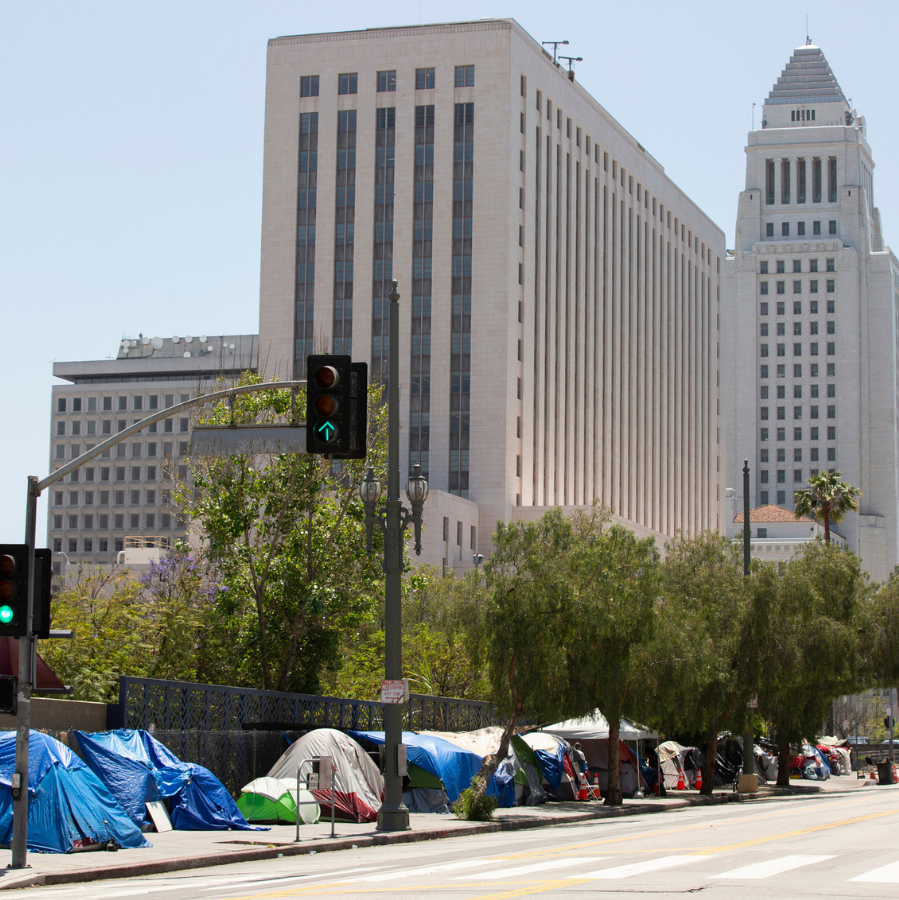
Funding for the Department of Housing and Urban Development increased by $4 billion, and much of that increase is directed to rental subsidies for low-income households and housing opportunities for homeless residents. NLC advocated for increases in funding for additional rental vouchers, public housing rehabilitation, CDBG, and homeless assistance. Funding is sufficient to renew existing housing vouchers, although rising rents mean it will be harder to find housing even with a voucher in many areas. The funding package also includes $200 million to expand rental vouchers to an additional 25,000 households in specific circumstances, such as those at risk of homelessness, survivors of domestic violence, and veterans. Funding for homeless assistance is increased by $213 million, for a total of $3.2 billion. Funding for public housing is also increased to maintain and make critical repairs to the nations aging stock of public housing.
As explained under the Congressional Directed Spending/Earmarks section, some funding for CDBG has been redirected to a new account for earmarks that results in a decline for CDBG formula grants from $3.4 billion to $3.3 billion but adds $1.5 billion in new funding for community development earmarks, for an overall increase in Community Development Funds for local projects to $4.8 billion.
Broadband and Cybersecurity
The Consolidated Appropriations Act includes several provisions important to local government technology. In addition to the billions of dollars provided for broadband infrastructure in BIL, Congress added an extra $450 million boost to the U.S. Department of Agriculture’s ReConnect program, which provides grants and loans for broadband infrastructure in rural communities. Congress also slightly increased funding levels for the National Telecommunications and Information Administration, to account for the more than $40 billion in new broadband grant programs the agency will be responsible for administering in the next few years.

The appropriations legislation also includes a new mandate for local government technology officers to be aware of: the Cyber Incident Reporting for Critical Infrastructure Act of 2022. This portion of the law will create new rules requiring certain owners and operators of critical infrastructure to report cybersecurity incidents and ransom payments to the federal government within 72 hours of “reasonably believing” a covered incident occurred, or within 24 hours of making a ransom payment. Many of the details for these new requirements – including specifically which infrastructure entities and which cyber incidents will be covered by the requirements – must be determined by the Cybersecurity and Infrastructure Security Agency in future rulemaking. NLC will monitor and participate in this rulemaking process to advocate for a reporting system that is effective and minimally burdensome for municipal governments.
Water Infrastructure
Water infrastructure programs under the U.S. Environmental Protection Agency (EPA) received level funding or a slight increase compared to FY21 – this includes the Clean Water and Drinking Water State Revolving Funds, funded at $1.638B and $1.126B respectively, and the WIFIA program, funded at $63M.
Additionally, water infrastructure grant programs that were authorized under the bipartisan infrastructure bill, but not appropriated, received funding for FY22 – this includes sewer overflow control grants ($43M), grants for reducing lead in drinking water ($22M and $27.5M through two separate accounts) and water infrastructure workforce development grants ($4M).
Energy Efficiency and Renewable Energy
Overall, the U.S. Department of Energy Office of Energy Efficiency and Renewable Energy is funded at a record level of $3.2B for programs related to sustainable transportation, energy efficiency, and renewable energy. Of interest to local governments is the Weatherization Assistance Program, funded at $313M (a slight increase compared to FY21), and a new Local Government Clean Energy Workforce Program, funded at $10M.
Environmental Programs
The FY22 appropriations bill provides a slight increase in funding for both the EPA Brownfields and Superfund programs, $92M and $1.233B respectively. Under the U.S. Department of the Interior, the Outdoor Recreation Legacy Partnership program receives $110M to support local parks and improved outdoor recreation access, particularly in urban areas.
Law Enforcement and Public Safety Grants
Congress approved $3.9 billion for grants to states and local law enforcement agencies. This is an increase of $506.4 million above FY 2021. This includes $674.5 million for Byrne Justice Assistance Grants (JAG), $512 million for Community Oriented Policing Services (COPS) programs, $115 million for the Second Chance Act programs, and $572.5 million for grant programs to address substance use disorders. The omnibus legislation also reauthorizes the Violence Against Women Act (VAWA) through 2027 and provides $575 million for prevention and prosecution programs. The funding also includes $95 million for grants to improve the NICS firearms background check system, $50 million for a new Community Violence Intervention and Prevention initiative, and nearly $300 million in community projects to fight crime and improve public safety in communities across the country.
Disaster Mitigation and Preparedness Funding
Congress approved $23.9 billion for FEMA programs. The FEMA appropriation is $2.19 billion above the FY2021 enacted level. The funding provides $18.8 billion for disaster response and recovery efforts and $3.6 billion for Federal Assistance, of which $645 million is for the State Homeland Security Grant Program (SHSGP). The SHSGP programs include $740 million for the Urban Areas Security Initiative (UASI), $720 million for firefighter grant programs, $130 million for the Emergency Food and Shelter program. The funding also includes $40 million for the Next Generation Warning System to improve the capabilities of public broadcasters to send critical emergency and civil defense warnings.
The omnibus also increases the federal share of the cost for response and recovery from 75 percent to at least 90 percent for disasters and emergencies declared or occurred in 2020 and 2021.
Workforce Development
The FY22 appropriations bill provides $9.8 billion to the Employment and Training Administration at the U.S. Department of Labor to support workforce training across multiple programs including $235 million for registered apprenticeships, $50 million to community college training, and nearly $1.8 billion for Job Corps. The bill also includes $1.2 billion for the Corporation for National and Community Service, which importantly funds $467 million for AmeriCorps State and National Grants and $231 for SeniorCorps, which are highly utilized programs in cities, towns and villages. The bill also provides a $61 million increase in funds for Career, Technical and Adult Education through the Department of Education. The bill also increases Pell Grants by $400 to a maximum of $6,895 per grant.
Public Health
The bill provides $8.5 billion for the Centers for Disease Control and Prevention (CDC) with a focus on supporting state and local governments to strengthen public health infrastructure including public health workforce initiatives and modernization of public health data and analytics.
Substance Use and Mental Health
The bill provides $6.5 billion to the Substance Abuse and Mental Health Administration (SAMHSA), including $2 million for mental health and $3.9 billion for substance use treatment and prevention. Notably, the bill invests significantly in suicide prevention, including support for the implementation of the Suicide Lifeline’s new 988 number.
Early Childhood and K-12 Education
Early childhood programs in the FY22 bill received an increase of $558 million across multiple programs including the Child Care and Development Block Grant, Head Start and Preschool Development Grants. Support for Community Learning Centers and Full-Service Community Schools were increased by $30 million and $45 million, respectively, over FY21 levels.
